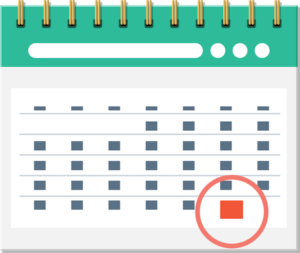
If you have decided that the way to get paid on your Minnesota construction project is by filing a mechanics lien, this step-by-step guide will break down the entire process for you.
Before making the leap to filing the lien, though, it’s important to keep in mind that there may be Minnesota preliminary notice requirements and that there are always timing requirements with which you must comply before a valid Minnesota mechanics lien may be filed. It can be a complicated and time-consuming task to file a mechanics lien by yourself, but if you want to move ahead and you’re ready to do so, just follow the steps below to start the mechanics lien process in the state of Minnesota.
Learn more: Minnesota mechanics lien rules, deadlines & FAQs
Before you start: Get an accurate mechanics lien form
The first step in preparing your Minnesota mechanics lien filed is using the right form. There isn’t anything particularly special about a mechanics lien form, but it needs to contain all the required information in order to be filed and recorded properly.
There are a lot of resources out there that claim to provide mechanics lien forms, but there’s no guarantee that they are accurate or even valid. Make sure you start with a lien form that meets Minnesota’s statutory requirements.

Download a free Minnesota Mechanics Lien form
Levelset’s forms are created and reviewed by construction attorneys and payment experts; thousands of Minnesota contractors and suppliers have successfully used these forms to get paid.
Step 1. Fill out the lien form
It is very important to make sure that your Minnesota mechanics lien contains all of the information required by statute. Mechanics liens are created by statute, which means that you must comply strictly with specific rules, requirements, and deadlines.
Failing to provide the required information on the lien claim (and providing it in the correct format) is a specific requirement. Failure to do so isn’t just a simple mistake — it can render your entire lien invalid. This means it’s crucial to make sure all the proper information is obtained and included on the lien document.
1. Claimant information
This as an easy one, yet many still find a way to mess this section up. Provide your full name and address on the lien claim form. If you are filing on behalf of a company, be sure to not only use the full legally registered business name but the business designation as well (i.e., LLC, Inc., etc.). Liens are challenged on all sorts of grounds, don’t let an error in your own information be one of them.
2. Property owner
Identifying the property owner may seem like a no-brainer, especially if you were hired by the owner. But there are several issues that can arise when trying to identify the property owner properly.
If there are multiple owners, list them all. If the work was commissioned by a tenant instead of an owner, then list them both. And there are other times where finding the information can prove impossible.
Learn more: How to find the owner on a project
3. Hiring party
The hiring party is the company that hired you. For this field, simply add your customer’s contact info. All this information should be found in your contract documents.
Provide your customer’s name, address, and phone number. If you were hired by the property owner, just repeat that information in this section.
4. Property description
The statute states that this section should contain a description of the premises to be charged, identifying the same with reasonable certainty. This doesn’t mean that a full, legal property description needs to be used, but adding as much information is your best bet. A simple street address won’t suffice.
Learn more: How to find the legal description of a property
5. Description of labor & materials
This doesn’t have to be a full, itemized list of all the labor or materials provided to the project. Rather, this should be a general statement of what you provided for the permanent improvement of the property. Include just enough details for another person to understand the role you played in the construction, repair, or improvement of the project.
6. Lien amount
Minnesota lien law states that the claim should be limited to the contract price of the work, or if no contract, then the reasonable value of the work or materials provided. The one additional amount that you may include in your lien claim is any accrued interest. But leave out any attorney’s fees, collection costs, or other unauthorized extra costs that weren’t in your contract.
Learn more: What amount can I claim in my lien?
7. First & last dates of furnishing
The first and last dates of furnishing refer to your company’s first and last day on the job. For this field, put the first and last dates that you provided labor, materials, or other services to the construction project.
Determining the last date of furnishing may be complicated in some circumstances, like if you’re called back to the job after you finished. In general, completing punch list items or repairing defective work does not count. The less substantial the work provided at the end, the less likely that work will be considered the last date.
8. Signed & notarized
Lastly, it’s time to sign the lien claim. Sign the document, verifying your oath that you have knowledge of the facts stated and that any required preliminary notices had been sent out. However, be sure to sign the lien in the presence of a notary and have the lien notarized. Any lien claim that isn’t notarized will be rejected by the county recorder’s office.
Learn more: Can a mechanics lien be notarized remotely?
Step 2. File your Minnesota mechanics lien claim
Now that you’ve properly filled out your mechanics lien form, it’s time to file your claim. This may seem like the easy part, but a lot can go wrong when filing your lien:
- Incorrect filing fees
- Filing in the wrong county or office
- Missing your deadline
- Incorrect information or paperwork
When to file a Minnesota mechanics lien

The deadline to file a mechanics lien in Minnesota is 120 days from the date that you last provided labor or materials to the project. Missing this deadline is fatal to your lien claim.
Calculating the last day of furnishing can prove tricky at times, but the Minnesota courts have dealt with the issue of whether repair work can extend the lien period. As long as the work isn’t “nominal or insignificant” and the work wasn’t performed for the “sole purpose of extending the deadline,” it can extend the lien filing period.
Where to file your lien claim
The location to record a mechanics lien depends on the property and, in some cases, the nature of the project. In Minnesota, a mechanics lien must generally be filed with the county recorder.
View all Minnesota county recording offices
However, if the lien is claimed against registered land, it must be recorded with the Registrar of Titles (in some counties, the Registrar and Recorder are the same person). And if the lien arises under a project for railroad or telegraph lines (or similar projects), the lien statement must be recorded with the Minnesota Secretary of State.
If you are unsure whether the property is registered or not, your best bet is to file in the county recorder’s office. Be sure to contact your county recorder’s office ahead of time and make sure you have answers to essential questions before you visit or mail your claim.
Recording your mechanics lien
There are four possible ways to record your mechanics lien in Minnesota:
- In person
- By mail
- E-recording
- Levelset
In person
The first option is to deliver the lien claim to the recording office in person — by yourself or by courier. Walking in the lien claim yourself is the best way to address any problems, and ensure that the lien gets filed promptly.
Keep in mind that the county recorder doesn’t fact-check your lien, catch spelling errors, or ensure that it is 100% valid. They may even file it if you’re past the deadline. Even if the recorder accepts the lien claim, the property owner or other party may still be able to challenge it.
By mail
You can also submit your lien claim by mail or FedEx. If you file by mail, remember to include proper recording fees. Liens are often rejected for improper fees (even if you provide too much money). Any delay caused by needing to resubmit the lien for recording takes time. And since liens are time-sensitive documents, it can possibly result in a missed deadline.
E-recording
In some Minnesota counties, you may be able to e-record your mechanics lien, but this is not universal. If e-recording is available, choose the e-recording service, select the proper county and document (mechanics lien), follow the prompts, and provide payment.
Levelset
Filing a mechanics lien in Minnesota with Levelset is perhaps the easiest, most accurate method. Thousands of contractors across the country trust us to file their mechanics lien according to statutory requirements — and research the information in the lien to ensure it is correct.
Step 3. Serve notice of your claim
Minnesota requires claimants to file AND serve their mechanics lien in order to be valid.
You must serve a copy of your lien “on the owner, the owner’s authorized agent or the person who entered into the contract with the contractor.” Service must take place within 120 days of last providing labor, materials, or equipment on the project. This is the same deadline as filing the lien itself, so make sure you serve it promptly after recording the claim. Service can be completed in person or by certified mail.
Congratulations! Once the lien document has been filed and served – your Minnesota mechanics lien is ready to get you paid what you’ve earned.
What’s next?
A Minnesota mechanics lien is effective for 1 year from the date the claimant last furnished labor or materials to the project. While liens are very effective at helping unpaid contractors get paid, they can be disputed or challenged. Filing the lien isn’t necessarily the end of the process.
Foreclosure

If the deadline is steadily approaching, with no payment plan in sight, it may be time to enforce your lien through the foreclosure process. You must initiate a foreclosure action within 1 year from your last date of furnishing.
While a valid lien virtually guarantees payment if a foreclosure action is needed, that proceeding can be a time-intensive process. Depending on the amount in dispute, you may want to consider if foreclosure is worth it.
Notice of intent to foreclose
There is, however, one final step you can take before filing the lawsuit. You can always choose to send a Notice of Intent to Foreclose. Consider this a final warning shot that states, “if the debt isn’t paid in x amount of days, we will file a lawsuit.” This threat is usually enough to loosen the grip on your money, as no one wants to go to court!
Lien release
If the debt is eventually paid, then it may be time to remove the lien claim from the county records. Although there’s no specific legal requirement to do so, typically the payment is made in exchange for releasing the lien claim. This is a simple matter of filing a lien release with the county recorder.
More resources for Minnesota construction businesses
While filing a mechanics lien is the most effective tool to ensure you collect what you earn on a Minnesota project, it’s not the only one. Construction businesses have a variety of options to get paid faster, and you don’t have to pick just one. Many of these tools can be combined to increase your ability to collect on time, every time.
View all resources for Minnesota Construction Businesses

